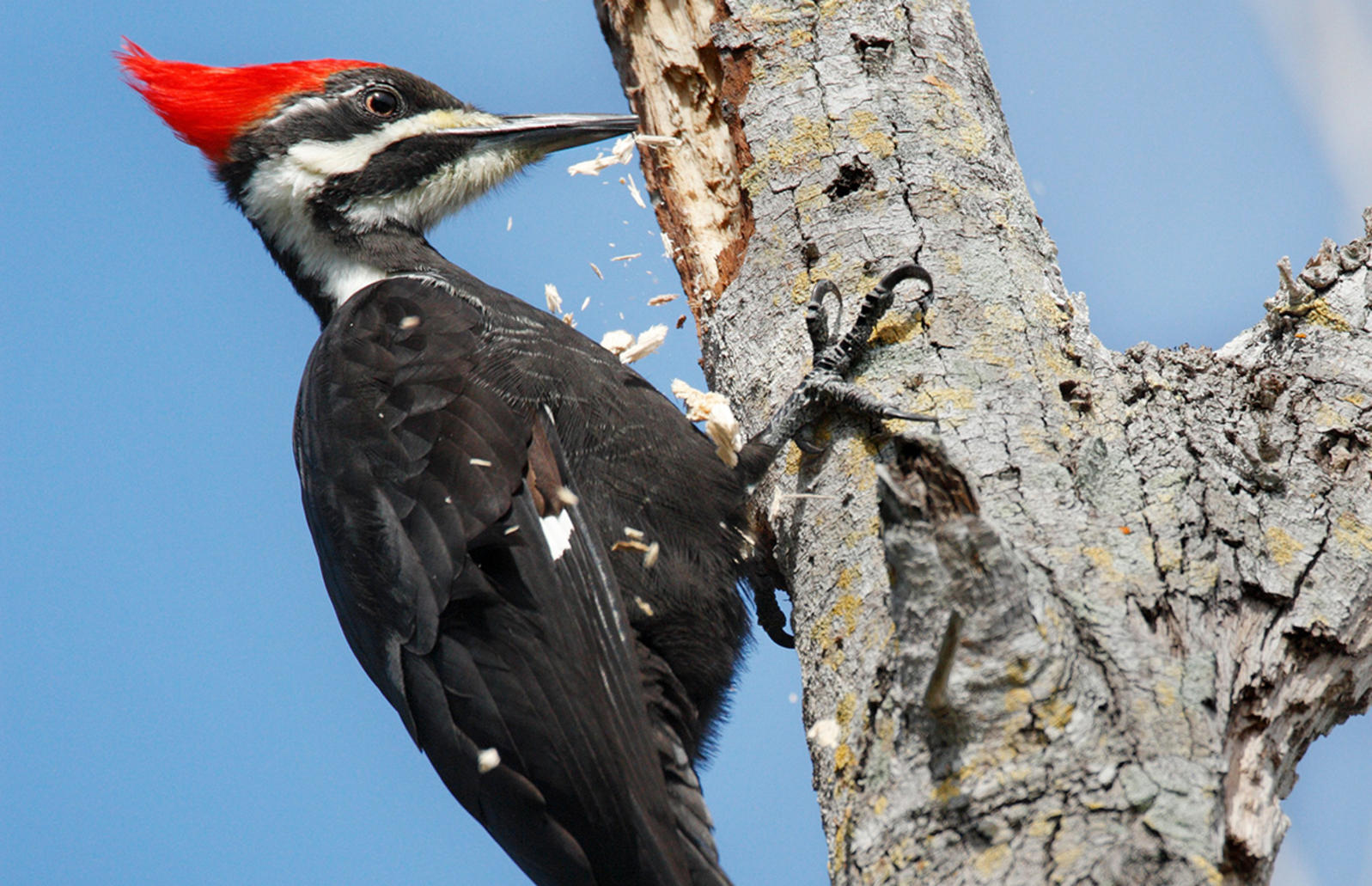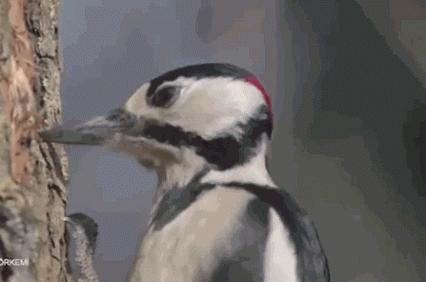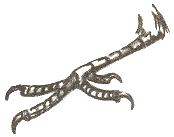Physics in the animal world: the woodpecker and its "jackhammer"

Source: audubon.org
Woodpeckers (Latin Picidae ) - a large family of birds, which includes 233 species. In most cases, woodpeckers live in forests. These are climbing woody birds that fly, although not very well. The overwhelming majority of the family members are distinguished from other birds by an unusual chisel-shaped beak. With it, woodpeckers hammer the bark and core of the tree, trying to find their main food: insects and their larvae.
Woodpeckers use their strong beak not only to get food, but also to create nests, which they usually arrange in tree hollows. Woodpeckers knock on wood and to communicate with each other. In the spring, the males of many species of woodpeckers drummed with their beak over dry trees. Such trills are probably heard by many readers. The woodpecker's body is almost perfectly adapted to its lifestyle. Due to this, the woodpecker can withstand significant loads, which are deadly for many other living organisms.
Slotting wood is a very energy-consuming occupation. In order to replenish energy reserves, woodpeckers have to constantly eat. For example, a black woodpecker can eat about a thousand ants or several hundred bark beetles in just one “meal”. The green woodpecker eats even more - it eats about two thousand ants per day.
Woodpeckers are called forest nurses, and this, in principle, is true. Bird, eating a large number of larvae of pests of trees or adult insects prevents an uncontrolled increase in the population of pests.
')
Loads that can withstand woodpecker
The average speed of striking woodpecker - 20-25 movements per second. The total number of strikes inflicted by woodpecker on a tree per day - 8000-12000. In order for a bird to be able to withstand the overloads associated with chiseling trees, its skull and skeleton must be unusually strong. If any other bird had struck a tree at such a speed, in a few blows it would have died from overloads.
Measurements show that the overloads experienced by woodpecker reach 1000 - 1200g. This is much more than the organisms of other animals, including humans, can withstand. We are not able to withstand overloads of more than 80-100 g. The greatest (short-term) overload of the car, in which a person managed to survive - 179.8 g. Skydivers experience overloads of up to 10 g when opening a parachute. Pilots performing aerobatics get overloads up to 12 g.
The woodpecker's beak is strong enough to hollow a tree and not break or deform. The tip of the beak of most species of woodpeckers looks like a chisel. Thanks to this, birds can “work” with the hardest types of wood. With active hammering, the temperature of the brain rises. Therefore, the woodpecker can not peck all the time, he has to take breaks to reset the temperature.
The woodpecker is not only strong skull and beak. This bird is equipped with a “shock absorber” in the form of cerebrospinal fluid that suppresses vibration. The woodpecker's amortization system also includes an elastic beak, a sinewy and springy hyoid bone (hyoid), as well as a special spongy bone in the head. A hyoid is more cartilage than bone tissue. It is located not only in the pharynx, but also enters the nasopharynx, wrapping the skull. Thus, the bird's skull is one of the most advanced natural shock absorbers.

Softens a blow not one factor, but their whole system. While chiseling a tree, the beak moves perpendicular to the surface on which the woodpecker beats. If the blow were not perpendicular, but slightly at an angle, the bird's depreciation mechanism would not have worked, and it could have simply died. But there works a harmonious system of muscles, which allows the head and beak to move in a straight line. When the beak is struck, the muscles that pull away the woodpecker's skull from the point of impact immediately work.
Protected from impact and bird eyes. When hitting a tree in the eye of a woodpecker, the third eyelid is lowered (flashing membrane). It protects the eyeball from vibration, avoiding retinal detachment.
Another unique feature of the woodpecker is its long tongue. All birds have a tongue attached to the back of the beak. But the woodpecker language comes out of the right nostrils, divided into two halves. These two halves cover the bird's head and neck, leaving through the hole in the beak. After that, they connect. With tongue, woodpeckers take insect larvae from deep passages made in wood.

In order to place all these depreciation devices within the skull, the woodpecker had to sacrifice the brain size. In the process of evolution, it decreased. Moreover, the decrease in brain volume did not lead to the fact that woodpeckers have become "more stupid." In fact, woodpeckers have a high organization of behavior. They have complex territorial and nesting habits.
But in birds, striped bodies and a layer called the hyperstriatum are responsible for “intelligence”. These parts of the brain are small in size, so a woodpecker can do with a relatively small brain.
 Well, in order to easily move along the trunks of trees, woodpeckers use an X-shaped design of the legs. Two fingers on the paw of the woodpecker are directed forward, and two - back. Most other species of birds have three fingers pointing forward and one pointing back. Tenacious claws, strong fingers and tendons help to hold the bark. All this provides a reliable grip on the tree, and the woodpecker does not fall even during the most active "work".
Well, in order to easily move along the trunks of trees, woodpeckers use an X-shaped design of the legs. Two fingers on the paw of the woodpecker are directed forward, and two - back. Most other species of birds have three fingers pointing forward and one pointing back. Tenacious claws, strong fingers and tendons help to hold the bark. All this provides a reliable grip on the tree, and the woodpecker does not fall even during the most active "work".Source: https://habr.com/ru/post/397879/
All Articles